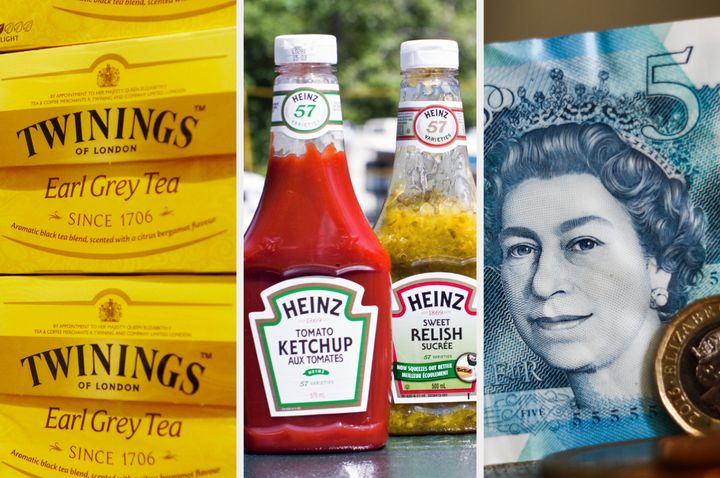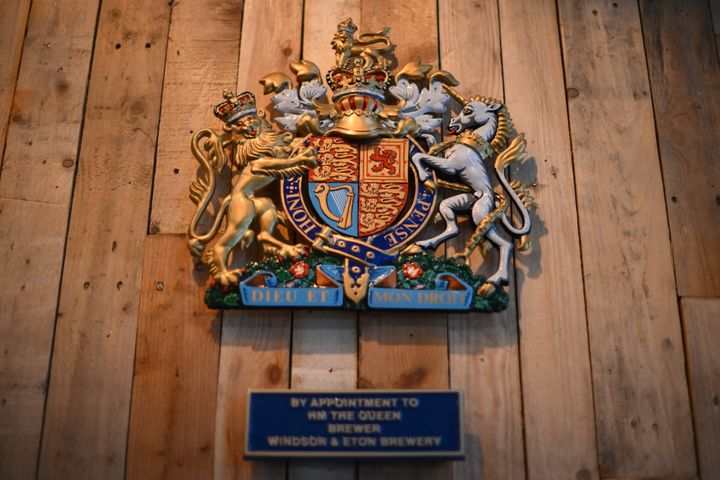
The end of Queen Elizabeth II’s reign does not just mean a changeover for the UK’s head of state.
The Queen’s face or name have been put on many British (and overseas) items over the many decades of her reign, from state-owned objects – like currency – to brands you might not have realised, like Twinings, and Heinz.
Over 800 brands have lost their right to use the royal coat of arms on their packaging, and they now have to prove the royal family use their products before they can put it back.
Here’s what you need to know.
What is the royal warrant?
This is when the royal coat of arms – with the English lion on the left and the Scottish unicorn on the right of a shield, featuring different UK emblems on it – can be printed on a product’s packaging. And it doesn’t cost the brand a thing.
There is usually a statement underneath explaining which royal appointed the warrant, too. Most products previously had: “By Appointment to Her Majesty the Queen.”
The monarch can decide who is to be a “grantor” (aside from themselves), meaning the person who officially decides what products can receive the royal warrant.
Officially known as a Royal Warrant of Appointment, it allows brands to use the coat of arms if they supply goods or services to the royals “on a regular and ongoing basis to the Royal Households of Grantor/s for not less than five years of the past seven”.
Brands also have to prove they have policies and plans in place which show they prioritise sustainability and the environment.
Companies which sell items to souvenirs shops in various royal estate do not qualify.
Which brands use it?
Among the hundreds of brands, both British and international, which hold the royal warrant, here are just a handful of household names which received the official royal seal of approval:
Heinz
Twinings
Bacardi-Martini
Cadbury UK Ltd
Carluccio’s
Coca-Cola
Kellogg’s
Boots Opticians
Clarins
Molten Brown
Penhaligon’s
How long can brands use it?
Warrants are granted for up to five years at a time, but can be reviewed for renewed the year before it runs out.
These warrants will now be reviewed and granted by the Queen’s successor, King Charles III – although it’s worth noting that he actually approved many of the previous royal warrant holders anyway.
An estimated 875 brands have the royal coat of arms on their packaging – but now the Queen has died, it no longer means anything, according to the Royal Warrant Holders Association.
But, the brands are allowed to use the symbol for an additional two years as they adapt to life under the new monarch, as long as there is not a significant change within the company concerned.
Between 20 and 40 new warrants are granted and old ones cancelled each year – even if it’s cancelled, they can have a year to alter packaging.
How can the warrant be cancelled?
There are a lot of different reasons – if the quality of the product is not “up to standard” anymore, it’s “no longer manufactured or available”, order numbers have fallen or the goods or services are no longer required, the royal warrant could be withdrawn.
If a company goes under, it loses the royal seal of approval too.

Will anything else need to be changed now we have a new monarch?
Yes – the most obvious thing being the UK currency. The Queen’s face is on all of British coins and bank notes right now.
The Bank of England says it costs around 7p or 8p to make a banknote, and there are around 4.7 billion in use in the UK at the moment – meaning it could turn out to be pretty expensive to replace them all.
But, like with the royal warrant, this change is not usually quick.
For instance, the Queen’s face did not begin to appear on coins until the year after her accession (1953), and she was not on banknotes for years – although that was because she was the first monarch to appear on such currency.
King George VI’s face was also only removed from coins 20 years after his death, during the change to the decimal system.
According to German news outlet DW, the Bank of England has clarified that notes with the Queen’s face are still legal tender, and the Bank is set to release an update after the national mourning period is closed.
What about the post?
Unused stamps will stay valid for use until at least the end of next year.
Postboxes always carry the insignia of the monarch reigning at the time it was put up – E (Elizabeth II) and R (for Regina). New boxes now may use the cypher CR – Charles Rex III. But the ones currently in place will not be changed.
Royal Mail has not revealed how much it would cost to do this anyway.
And, the organisation told DW that “in line with the King’s wishes we will minimise any waste and avoidable cost, so we will be using up stocks of postage stamps and not removing the late Queen’s cypher from vehicles and post boxes ”.
What else might need to be changed?
Many of our emergency services will need to be updated at some point, from the fire service ensign, to military medals with the Queen’s effigy, police helmets, and UK passports.
Some Commonwealth currency bears the Queen’s face, too.
Her image is on the currency of at least 33 countries, more than any other living monarch, including Canada, Jamaica, New Zealand, as she was head of the Commonwealth.